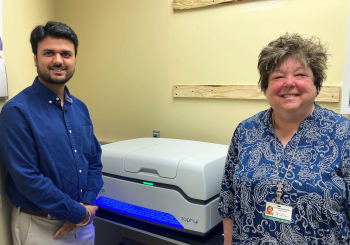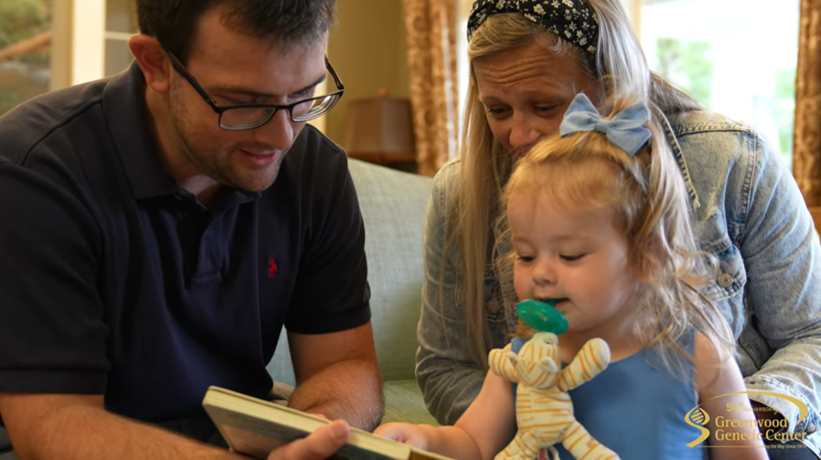
Greenwood, SC – The Greenwood Genetic Center is the first organization in South Carolina to acquire Bionano’s Saphyr instrument for advanced genetic testing capabilities.
The Saphyr instrument uses a novel technique called optical genome mapping (OGM) to identify structural variations in the genome at a higher resolution and in a more cost-effective and timely manner than traditional cytogenetic testing.
“Optical genome mapping combines the capabilities of three clinically available tests, karyotyping, microarray, and fluorescence in-situ hybridization, and has 1000X higher resolution than traditional chromosome analysis,” said Barb DuPont, PhD, Senior Director of GGC’s Cytogenetics Laboratory. “We can effectively replace three tests with this single assay that is faster, less expensive, and will also identify genomic changes that we would never have been able to detect with any other test.”
Nikhil Sahajpal, PhD, Laboratory Genetics and Genomics fellow at GGC, is leading the Center’s OGM project under a grant from the American College of Medical Genetics and Genomics Foundation.
“Optical genome mapping allows us to analyze long pieces of DNA and reconstruct the chromosomes, similar to putting together a puzzle,” said Sahajpal. “While chromosome analysis and genome sequencing technologies have their strengths, OGM overcomes some of their limitations and allows us to identify structural genetic changes that have been significantly understudied because of the lack of technology.”
 Sahajpal gained experience with OGM during his post-doctoral fellowship at Augusta University and is applying the new technology to several GGC patient cohorts where a genetic diagnosis has been lacking. Current studies include patients with neural tube defects, limb anomalies, and prenatal cases where there are ultrasound anomalies, but genetic testing has so far been uninformative.
Sahajpal gained experience with OGM during his post-doctoral fellowship at Augusta University and is applying the new technology to several GGC patient cohorts where a genetic diagnosis has been lacking. Current studies include patients with neural tube defects, limb anomalies, and prenatal cases where there are ultrasound anomalies, but genetic testing has so far been uninformative.
“Early testing has already been able to identify a causative genetic variation in a prenatal case where current standard-of-care tests had fallen short,” added Sahajpal. “We are driven by the hope of providing a diagnosis that couldn’t have been found any other way and ending what can often be a very long diagnostic odyssey for patients with rare diseases.”
GGC envisions that OGM may prove to be a significant advancement in genetic diagnostics.
“GGC has recently launched a precision medicine initiative,” said GGC Director, Steve Skinner, MD. “Part of that initiative aims to improve our ability to analyze the genome and provide answers to patients who remain undiagnosed. OGM is another tool in our arsenal, and we are excited by the potential for OGM to provide an accurate and rapid diagnosis for patients who have these difficult-to-detect variants.”
Top photo: Sahajpal (left) and DuPont with the Saphyr instrument in GGC’s cytogenetics lab
Bottom photo: (courtesy of Augusta University): A Bionano chip in front of a screen showing DNA imaged at single molecule resolution using optical genome mapping.
More on how optical genome mapping works:
https://bionano.com/how-ogm-works/
